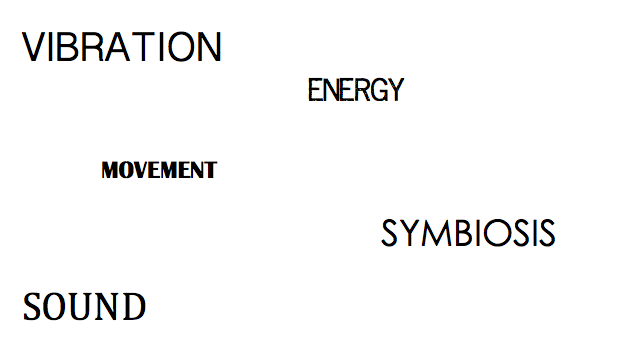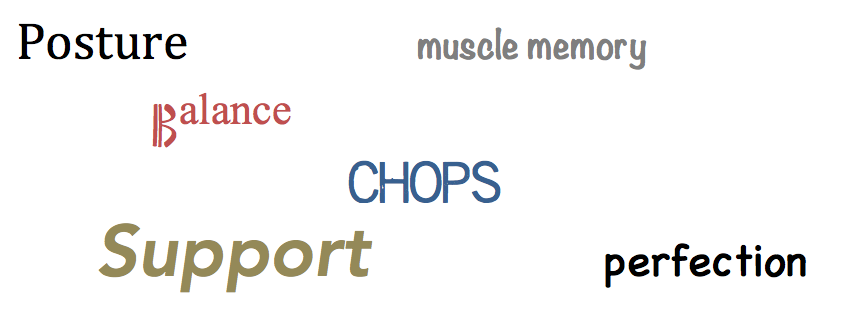Resonance (in physics): The reinforcement or prolongation of sound by reflection from a surface or by the synchronous vibration of a neighboring object.
-The Oxford Dictionary of the English Language
Whether playing pianissimo, or fortissimo (or anything in between), an optimally resonant sound is complex and colorful, as well as nimble and flexible. When your instrument is resonating optimally, you have better technique, better intonation, and a wider dynamic and expressive range.
And whether you’re improvising or playing interpretive music, optimum resonance allows you to most readily access your creativity. Nothing gets in your way.
In a word, optimum resonance yields satisfaction.
There are lots of musical instrument makers, as well as manufacturers of musical equipment (such as saxophone mouthpieces, violin bows, etc.) that design and market their products with optimum resonance in mind. (Or, at least with their conception of what that means!)
And there are no shortage of conversations between musicians about how a particular instrument or piece of equipment can impact resonance (for better or worse) .
Virtually all pedagogical methods (for any instrument) that address resonance take into account the effect of the player’s actions upon the resonance of the instrument.
And of course this makes sense. Because, truth be told, when you are playing your instrument, you become a part of that instrument. (I don’t mean this just metaphorically, but also, physically.)
But let’s start with looking at equipment.
For an instrument (or other piece of equipment) to vibrate or resonate freely, its material and/or parts need to be able to move freely in response to the energies exerted upon them (by you!) This ability to “move freely” is the “synchronous vibration” part of the definition above.
With respect to my saxophone equipment, for example, playing reeds that don’t vibrate freely and evenly interfere with my ability to get a balanced, resonant sound. (Same with a ligature that doesn’t allow the reed to vibrate optimally.)
Non-responsive reeds and poorly designed ligatures have one thing in common: they don’t allow for the movement necessary for optimal resonance.
So of course it makes sense to seek out, experiment with, and use, the kind of equipment that creates the best conditions for optimal resonance.
Now let’s look at ourselves.
One thing that many musicians don’t take fully into account is the fact that, not only do they need to resonate their instrument, but also, they need to allow the instrument to resonate them.
(Again, I’m not just speaking metaphorically here.)
It is this “exchange of energy” between the user and the instrument that has a profound impact upon the quality of resonance.
You’ll notice I said “exchange of energy”. That’s a fairly apt description of what’s happening when you play your instrument.
When playing saxophone, I’m sending energy by moving an airstream into the instrument. That focused air stream has an effect upon the instrument, for sure.
But that effect comes right back to me instantaneously. Without going too far into the acoustics of playing saxophone, suffice it to say that energy is returning to me (specifically, to my oral cavity) from the saxophone.
This act we call “voicing” in playing wind instruments (how we shape our oral cavity/air stream) is in response to that energy returning to us from the instrument itself.
So in a sense, the instrument is resonating us. It’s a two-way street, so to speak.
In playing wind instruments, voicing problems are a leading cause of problems with resonance (including response and intonation).
If I’m not allowing the optimal movements in my voicing mechanisms, I’m going to have less than an optimally resonant sound.
So of course, if my jaw is clenched, or my soft palate is collapsed (or overly rigid), I won’t get the resonance I desire, in part, because I’m not resonating optimally.
But there’s more to it than just what’s going on inside my mouth. Our human design works as an integrated whole.
So yes, the components of my oral cavity (soft palate, tongue, jaw, nasal cavity, etc.) need to be free to move.
But their freedom is largely dependent upon the relative freedom of my head/neck relationship. If I’m compressing my head downward into my neck (or holding it too rigidly upward), my voicing components are not going to be free to move optimally.
And that head/neck relationship both impacts, and is impacted by, what I’m doing with my ribs, torso muscles, legs, arms….everything.
So if my knees are locked, for example, that will negatively affect the functioning of my “voicing mechanisms”. Will I still be able to get a decent, resonant sound?
Yes, most likely. Just not as optimally resonant as it could be. It’s simple physics.
And even if you don’t play a wind instrument, you are still part of this “partnership of resonance”, as I sometimes describe it to my students.
What you do with yourself as you hold and play your violin, for example, has a measurable impact on the quality of your sound. Just as your strings and bow need to have just the right amount of tension to produce your best sound, so does your body.
This is where the Alexander Technique (the teaching/learning tool that I use to help myself and other musicians) is so effective and practical.
The Alexander Technique helps you to become aware of some of the habits of movement and posture that you bring into your playing (often unconsciously) that interfere with your ability to move freely. The habits that interfere with your resonance.
The next time you practice, see if you can notice where you might be blocking the resonance within yourself. Start by noticing the relative freedom (or lack of) between your head and neck (no matter what instrument you play), and go from there:
Are you shoulders, arms and hands freely mobile and spacious?
Are your ribs moving freely and fluidly as you breathe? (again, no matter what instrument you play!)
How are you doing in your hips/pelvis?
How about your knees?
Are you well-connected to the ground? (allowing your weight to disperse evenly as you organize yourself lightly upward)
Take notice of how you “use” yourself when playing. Observe your habits. Aim at facilitating the “synchronous vibration of a neighboring object”, and enjoy the difference!




